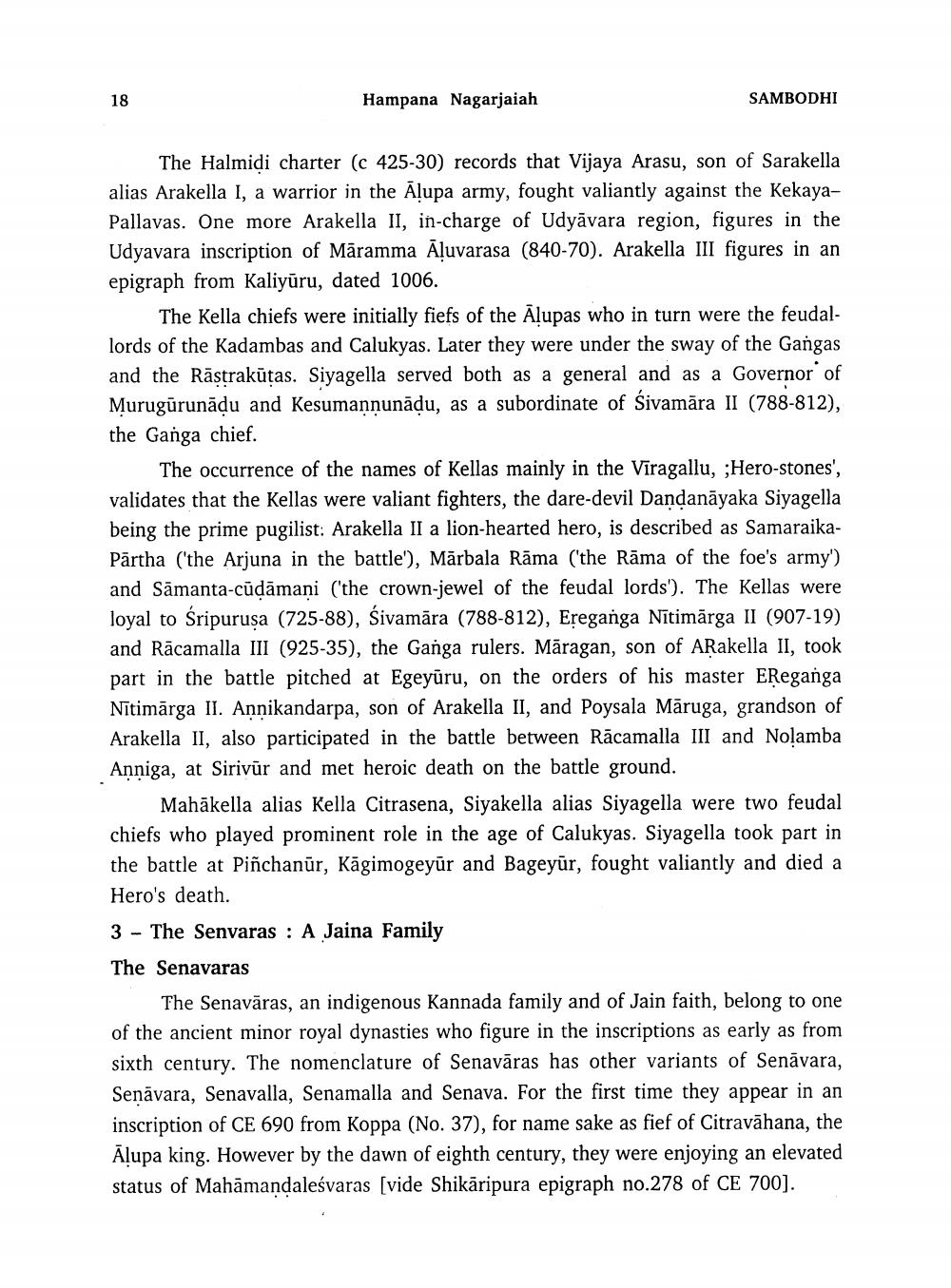________________
Hampana Nagarjaiah
SAMBODHI
The Halmidi charter (c 425-30) records that Vijaya Arasu, son of Sarakella alias Arakella I, a warrior in the Alupa army, fought valiantly against the KekayaPallavas. One more Arakella II, in-charge of Udyāvara region, figures in the Udyavara inscription of Māramma Aļuvarasa (840-70). Arakella III figures in an epigraph from Kaliyūru, dated 1006.
The Kella chiefs were initially fiefs of the Alupas who in turn were the feudallords of the Kadambas and Calukyas. Later they were under the sway of the Gangas and the Rāstrakūtas. Siyagella served both as a general and as a Governor of Murugurunādu and Kesumannunādu, as a subordinate of Sivamāra II (788-812), the Ganga chief.
The occurrence of the names of Kellas mainly in the Viragallu, ;Hero-stones', validates that the Kellas were valiant fighters, the dare-devil Dandanāyaka Siyagella being the prime pugilist: Arakella II a lion-hearted hero, is described as SamaraikaPārtha ('the Arjuna in the battle'), Mārbala Rāma ('the Rāma of the foe's army') and Sāmanta-cūdāmani ('the crown-jewel of the feudal lords'). The Kellas were loyal to Śripurusa (725-88), Śivamāra (788-812), Ereganga Nītimārga II (907-19) and Rācamalla III (925-35), the Ganga rulers. Māragan, son of Arakella II, took part in the battle pitched at Egeyūru, on the orders of his master Ereganga Nītimārga II. Annikandarpa, son of Arakella II, and Poysala Māruga, grandson of Arakella II, also participated in the battle between Rācamalla III and Noļamba Anniga, at Sirivūr and met heroic death on the battle ground.
Mahākella alias Kella Citrasena, Siyakella alias Siyagella were two feudal chiefs who played prominent role in the age of Calukyas. Siyagella took part in the battle at Piñchanūr, Kāgimogeyūr and Bageyūr, fought valiantly and died a Hero's death. 3 - The Senvaras : A Jaina Family The Senavaras
The Senavāras, an indigenous Kannada family and of Jain faith, belong to one of the ancient minor royal dynasties who figure in the inscriptions as early as from sixth century. The nomenclature of Senavāras has other variants of Senāvara, Senāvara, Senavalla, Senamalla and Senava. For the first time they appear in an inscription of CE 690 from Koppa (No. 37), for name sake as fief of Citravāhana, the Ālupa king. However by the dawn of eighth century, they were enjoying an elevated status of Mahamandalesvaras [vide Shikāripura epigraph no.278 of CE 700].




